Did you know that some Polaris Ranger models have a failure rate of up to 30% within their first two years?
Shocking, right? When you’re investing in an off-road vehicle, reliability is key, but not all Rangers are built equally.
If you’re thinking about getting a Polaris Ranger, understanding which years are prone to issues can save you from costly repairs and endless frustration.
Let’s dive into which Polaris Ranger years you should avoid to ensure a smoother ride!
What Makes a Polaris Ranger Years to Avoid Worth Avoiding?
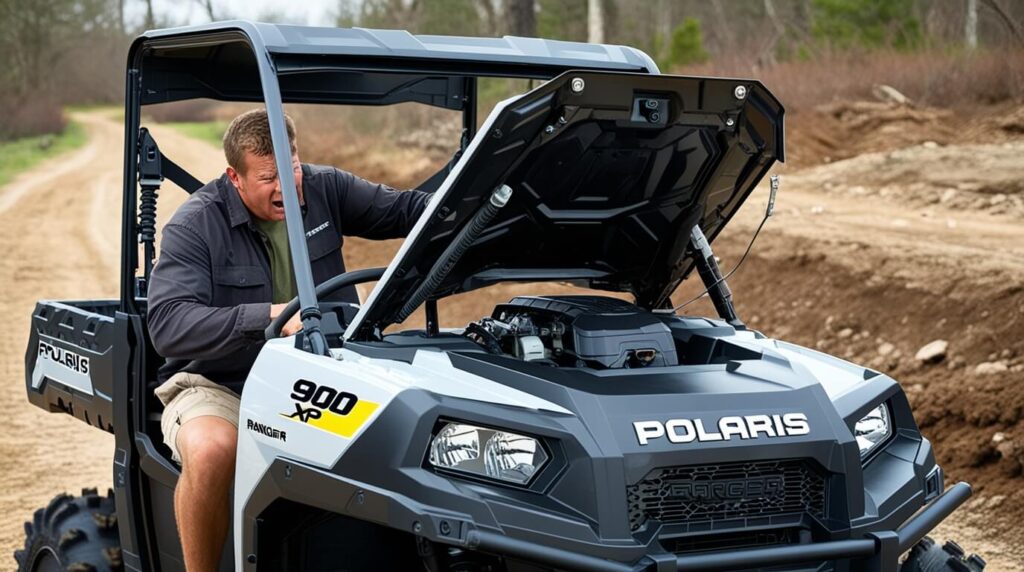
When it comes to Polaris Ranger models to avoid, certain years stand out due to reliability issues. For instance, the 2011 Polaris Ranger XP 800 had recurring problems with its transmission and overheating, leading to costly repairs.
Additionally, the 2015 Ranger 900 XP faced complaints about its electrical system and engine performance.
Choosing models from these years could mean dealing with frequent maintenance, which is why they’re worth avoiding. Always check user reviews and expert opinions before purchasing!
Also explore the Polaris Ranger 800 XP problems
Polaris Ranger Years to Avoid

When it comes to Polaris Rangers, certain model years have gained a reputation for issues that can affect performance and reliability.
If you’re considering buying one, knowing which years to avoid can save you from future headaches.
Here are some of the worst Polaris Ranger years to avoid.
1. 2013 Polaris Ranger 900 XP
The 2013 Polaris Ranger 900 XP is one year to approach cautiously. Many users reported engine overheating, particularly during heavy workloads or hot weather.
This issue was often linked to an underperforming cooling system.
Another common problem involved the clutch, which would wear down quickly, causing jerky acceleration or loss of power.
Some owners also complained about weak suspension that didn’t handle rough terrain well.
The electrical system in this model has been noted for malfunctioning, including issues with the power steering and headlights.
With repairs often costly, it’s a model year worth avoiding for anyone looking for a hassle-free experience.
Also explore the Polaris 900 xp Ranger Problems
2. 2015 Polaris Ranger 570
The 2015 Polaris Ranger 570 is another model year that raised concerns among users.
The engine in this version was notorious for poor cold-start performance, especially in winter conditions, which could leave you stranded.
Reports of fuel pump failures were also common, leading to stalling in the middle of rides.
Furthermore, some owners experienced problems with the transmission, where shifting gears became a rough and unpredictable experience.
Additionally, premature belt wear was noted by many, meaning frequent replacements.
For potential buyers, these combined issues make the 2015 Ranger 570 a model to avoid, especially if reliability is a priority.
3. 2016 Polaris Ranger XP 1000
While the 2016 Polaris Ranger XP 1000 came with impressive power and features, it also had its fair share of problems.
One of the main complaints was the poor design of the driveline, which resulted in vibrations and a noisy ride.
The stock bearings were weak and wore out prematurely, requiring frequent replacements.
Electrical issues were rampant in this model too, particularly with the digital display and sensors that could lead to false readings.
Additionally, the braking system wasn’t as responsive as it should be, making it less reliable in tough conditions.
Due to these drawbacks, many buyers have found it better to steer clear of this model.
Also explore the Polaris Ranger 1000 problems
4. 2018 Polaris Ranger 1000 XP
For the 2018 Polaris Ranger 1000 XP, several problems marred its overall reliability.
The most significant issue revolved around the clutch, which had a tendency to slip or fail completely under stress, leaving drivers with unpredictable power delivery.
Complaints about the engine making rattling noises were frequent, which could indicate internal wear and tear.
Users also faced consistent problems with the suspension system, which did not hold up well over time, especially for those who use their Rangers for heavier tasks.
Many buyers ended up dealing with expensive repair bills, making this year a difficult one to recommend.
5. 2020 Polaris Ranger XP 1000
The 2020 Polaris Ranger XP 1000 came with some modern upgrades, but not without flaws.
Many users reported engine misfires, particularly during cold starts, which affected the vehicle’s smooth performance.
The transmission system in this year was also problematic, with some experiencing difficulty in shifting gears and unusual noises during operation.
Another major concern was the wear on the drive belt, which often needed replacing sooner than expected.
Electrical problems, especially with the dashboard and power steering, were also reported by several owners.
Given the high repair costs associated with these issues, it’s advisable to avoid this model if long-term reliability is important to you.
Also explore the Can-Am Defender vs Polaris Ranger
Best Polaris Ranger years to use:
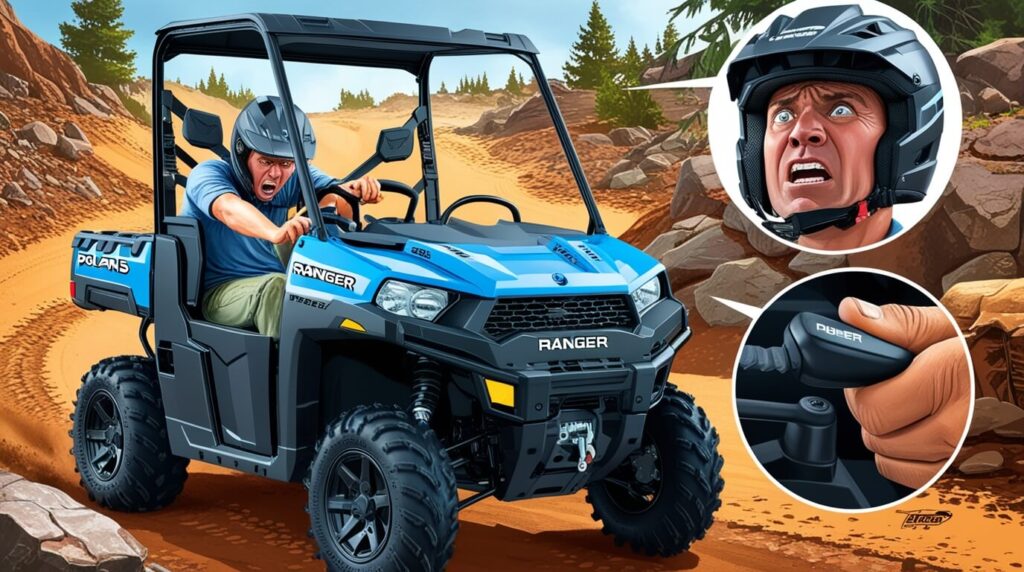
Here are some of the best years of Polaris Ranger for use.
1. 2013 Polaris Ranger XP 900
The 2013 model introduced significant power upgrades with its 875cc engine, offering smoother performance and impressive towing capacity (up to 2,000 lbs).
Its ProStar engine was a game-changer, making it perfect for both work and recreational activities.
The durability of this model is why it’s considered one of the best for long-term use.
2. 2017 Polaris Ranger XP 1000
The 2017 Ranger XP 1000 shines with its 80 horsepower engine, providing superior power and versatility.
With a cargo bed capacity of 1,000 lbs, it’s great for heavy-duty work. It also introduced better suspension, which enhances off-road comfort.
For those seeking power and functionality, this year offers excellent reliability and durability.
3. 2019 Polaris Ranger Crew XP 1000
If you need extra passenger space, the 2019 Ranger Crew XP 1000 is your go-to. It can comfortably seat up to six people, making it ideal for family or team outings.
Its enhanced features, like industry-leading ground clearance and advanced cab options, make it perfect for both rugged terrains and daily work.
4. 2021 Polaris Ranger 1000
The 2021 Ranger 1000 is known for combining efficiency and affordability. It boasts a 999cc engine with 61 horsepower, which is plenty for farm work, hunting, or off-roading.
Its user-friendly controls, spacious cabin, and robust design make it a reliable and comfortable choice for anyone new to the Polaris Ranger lineup.
5. 2022 Polaris Ranger XP Kinetic
The 2022 Ranger XP Kinetic is the first all-electric model and is a standout for those seeking eco-friendly yet powerful performance.
It offers quiet operation and instant torque, making it ideal for various terrains.
With zero emissions and less maintenance due to fewer moving parts, this model is perfect for long-term cost savings.
How to Avoid Problematic Polaris Rangers
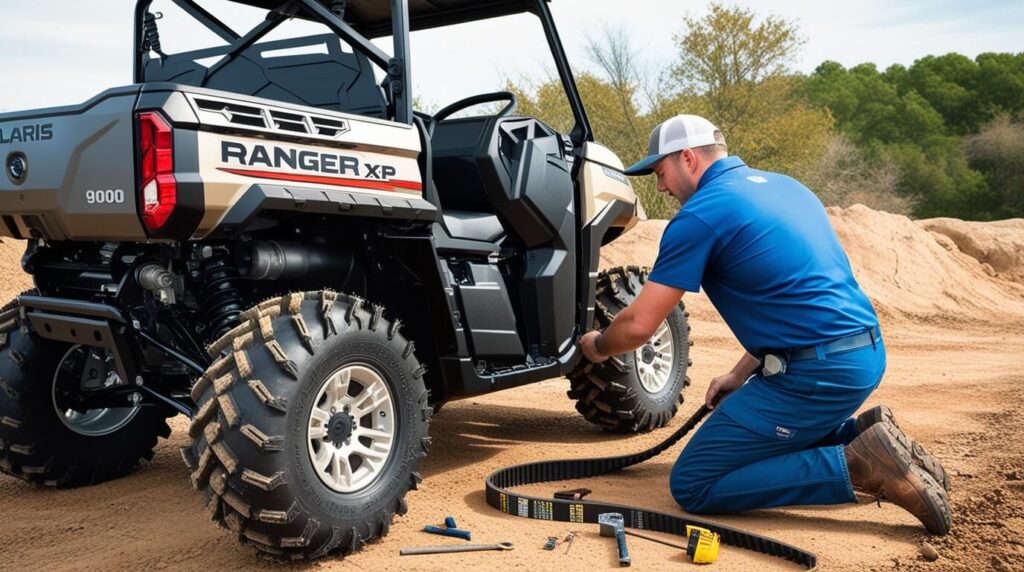
Avoiding problematic Polaris Rangers can save you time, money, and frustration. Here’s how you can do that, step by step:
1. Research Reliable Models
Before purchasing, research Polaris Rangers that have consistently high ratings. Look for models like the 2021 Polaris Ranger XP 1000, which is known for durability and power.
Avoid older models with frequent reports of mechanical issues. User reviews, forums, and expert opinions are essential for this.
2. Check Maintenance Records
Always review the vehicle’s maintenance records if you’re buying a used Ranger. Frequent breakdowns or major repairs like transmission issues may signal an unreliable model.
Ensure it has received regular servicing to avoid hidden problems that can lead to expensive fixes later.
3. Test Drive Thoroughly
When considering a Polaris Ranger, insist on a thorough test drive. Pay close attention to how it handles, check for strange noises, and ensure smooth shifting between gears.
Any unusual vibrations or jerking can indicate potential issues that may worsen over time.
4. Inspect for Recalls
Always check if the specific model you are interested in has had any recalls. Polaris often issues recalls for issues like steering problems or electrical failures.
This step ensures you’re not buying a Ranger that could potentially fail due to unresolved factory defects.
5. Verify Warranty Coverage
Make sure the Polaris Ranger you’re purchasing still has an active warranty, or inquire about purchasing extended coverage.
The warranty can cover costly repairs like engine failures or suspension problems, saving you from unexpected expenses if something goes wrong.
Factors to Consider When Buying a Polaris Ranger
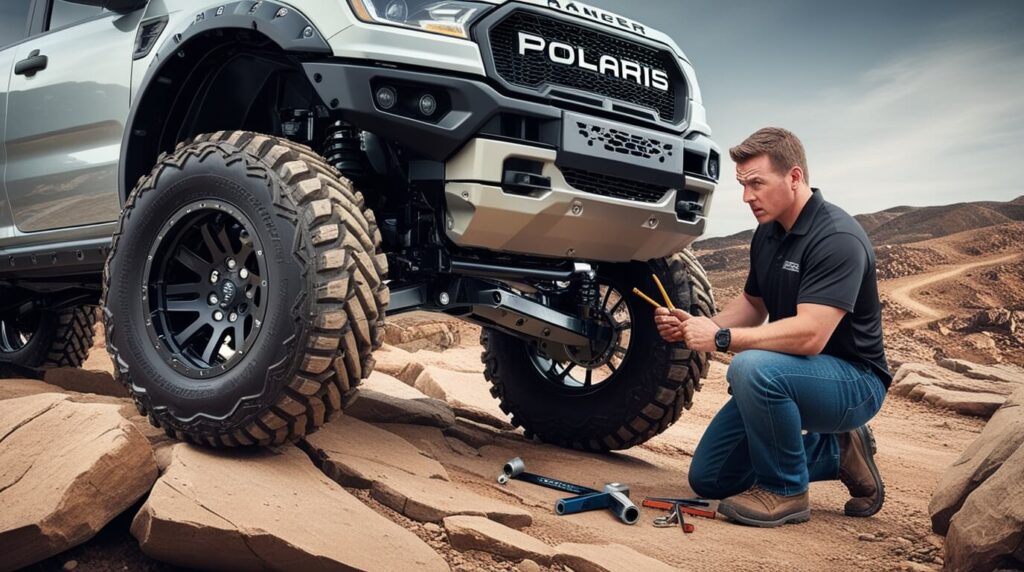
When buying a Polaris Ranger, there are key factors to keep in mind. Here are five crucial considerations to help guide your purchase decision:
1. Intended Use
First, think about how you’ll be using the Polaris Ranger. Are you hauling equipment, hunting, or off-roading? Different models, like the Ranger 1000 or XP 1000, cater to various needs.
Choosing the right model ensures the vehicle meets your work or recreational requirements.
2. Engine Power
Consider engine power. The Polaris Ranger offers options ranging from 44 to 82 horsepower.
For heavy-duty tasks, a more powerful engine like the XP 1000’s 999cc motor is ideal. If you’re doing light work, a smaller engine might be enough, saving on fuel consumption.
3. Seating Capacity
Seating is crucial depending on your needs. Polaris Rangers come with 2-seat, 3-seat, and crew options for up to six passengers.
If you frequently transport teams or family, a crew model like the Ranger Crew XP 1000 ensures comfort and space.
4. Towing and Hauling Capacity
For heavy-duty jobs, evaluate the towing and payload capacities. The Ranger XP 1000, for example, can tow up to 2,500 pounds and carry 1,000 pounds in its bed.
If you need strong towing and hauling capabilities, make sure your model fits these needs.
5. Price and Budget
Lastly, set a budget. Polaris Rangers range from $12,999 to over $20,000, depending on features and add-ons. Look at what you need versus what you can afford.
Higher-end models with extra features might be tempting, but ensure it aligns with your financial plans
Factors to Consider When Buying a used Polaris Ranger
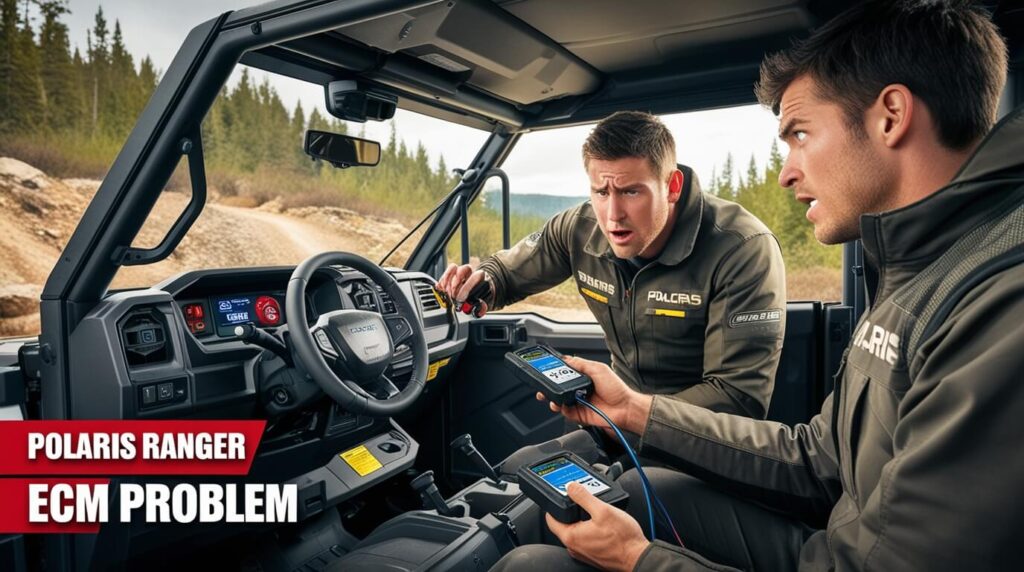
When buying a used Polaris Ranger, it’s essential to consider specific factors to ensure you get a good deal. Let’s break it down:
1. Condition of the Engine and Transmission
The heart of any vehicle is its engine and transmission. When inspecting a used Polaris Ranger, check for unusual noises, leaks, or hard shifting.
A well-maintained engine should start smoothly and idle without issues. Service records can help verify regular maintenance.
2. Mileage and Usage
Mileage directly impacts the vehicle’s wear and tear. Low mileage often indicates less usage, but it’s crucial to ask about the Ranger’s use.
Off-road trails can cause more damage than light farm use. A typical UTV might last 7,000-10,000 miles, but hard use could reduce this.
3. Suspension and Frame Condition
The Polaris Ranger’s frame and suspension take the brunt of rough terrain. Check for rust, bent parts, or cracks in the frame.
Suspension issues like sagging or worn shocks can signal potential costly repairs. Look underneath for damage that might not be visible at first glance.
4. Tires and Brakes
Worn-out tires and brakes are a common issue in used Rangers. Ensure the tires have sufficient tread and are free from cracks or punctures.
The brakes should feel firm and not spongy. Replacing all four tires and brakes could set you back a few hundred dollars.
5. Accessories and Modifications
Many Polaris Rangers come with aftermarket modifications like winches, roofs, or upgraded seats. While these can add value, improper installation can cause problems.
Make sure that any mods or accessories are functional and haven’t compromised the vehicle’s reliability or safety.
How to Spot a Well-Maintained Polaris Ranger: Signs and Questions to Ask
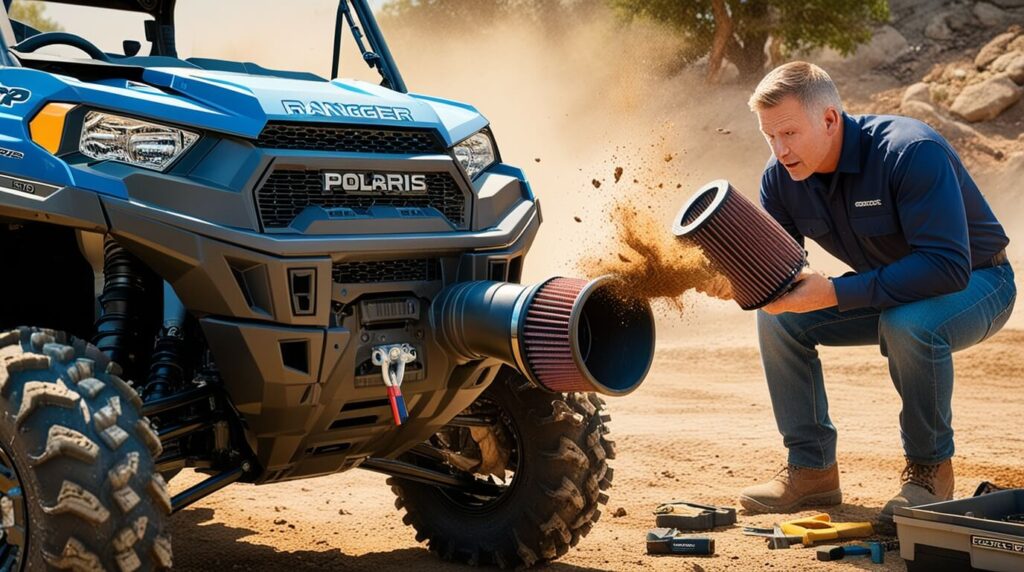
When you’re looking to spot a well-maintained Polaris Ranger, there are a few signs and questions that can give you peace of mind.
I’ve found that paying attention to these key points can make all the difference, especially if you’re new to the off-road world.
Whether you’re buying used or simply checking up on your own Ranger, here’s what to keep an eye out for:
1. Exterior Condition
- What to look for: Check the body for rust, dents, and scratches. A well-maintained Ranger will have minimal damage, showing that the owner has taken care of it.
- Why it matters: Rust and corrosion can affect performance over time. If the exterior looks worn out, the internal parts might also be neglected.
2. Clean Engine Bay
- What to look for: The engine bay should be relatively clean with no visible oil leaks. A few specs of dirt are normal, but an excessively dirty engine could indicate neglect.
- Why it matters: Oil leaks or a dirty engine can lead to larger mechanical issues down the road. A clean engine bay often points to regular maintenance.
Ask:
- When was the last oil change?
- Have there been any major engine repairs?
3. Tire Condition
- What to look for: Tires should have even tread wear. Check for cracks, punctures, or worn-out areas.
- Why it matters: Uneven tread could mean alignment issues, which can lead to poor handling. Tires in good shape show the owner has been mindful of vehicle safety.
Ask:
- How often do you rotate the tires?
- Have you had to replace them recently?
4. Fluids Check
- What to look for: Ask to check the oil, coolant, and brake fluid. They should be at the correct levels, and none should look milky or dirty.
- Why it matters: Clean fluids indicate the Ranger has been maintained regularly. Contaminated or low fluids could point to serious issues like overheating or engine damage.
Ask:
- When were the fluids last topped off or replaced?
5. Suspension and Brakes
- What to look for: Inspect the suspension for any wear or damage, and ensure the shocks aren’t leaking. Test the brakes – they should feel firm and responsive.
- Why it matters: Suspension and brakes are crucial for off-road performance. If they feel spongy or weak, it might need costly repairs.
Ask:
- Have you ever replaced the shocks or brake pads?
- When was the last brake service?
6. Service Records
- What to look for: The seller should have maintenance records showing regular services like oil changes, tire rotations, and any repairs.
- Why it matters: A history of maintenance proves the owner has cared for the vehicle, making it more reliable in the long run.
Ask:
- Do you have a record of all maintenance and repairs?
7. Start-Up and Test Drive
- What to look for: When you start the Ranger, listen for any unusual sounds like knocking, ticking, or grinding. During a test drive, check for smooth acceleration, responsive steering, and effective braking.
- Why it matters: Noises and jerky movement could indicate engine or transmission problems. A smooth ride suggests the vehicle is in good condition.
Ask:
- Are there any noises or performance issues you’ve noticed recently?
Final Tip: Look for Signs of Off-Road Wear
What to look for: If the Ranger has been used heavily for off-roading, it might show signs of wear like scratches under the chassis or worn suspension. This isn’t always a deal-breaker, but it’s good to know what kind of life the vehicle has had.
Ask:
- How often do you take it off-road, and what kind of terrain?
User Reviews
- Mike J. from Texas shared, “My 2010 Ranger XP 800 had continuous overheating problems. It was a money pit.”
- Sarah K. mentioned, “Bought the 2015 Ranger 900 XP, and I had to replace the transmission twice within a year!”
- Tom H. said, “Loved the power of the 2010 model, but constant electrical failures made it unreliable.
Pros and Cons

Here are the pros and cons of using the Polaris Ranger.
Pros of the Polaris Ranger:
Here are the top 5 pros of Polaris Ranger.
1. Versatility
The Polaris Ranger excels in various environments, from farm work to trail riding. Its ability to handle different terrains, including mud, snow, and rocky paths, makes it a popular choice. With plenty of options for customization, it can be tailored to suit individual needs, enhancing its versatility.
2. Durable Build
Built for tough conditions, the Ranger’s sturdy frame and protective components withstand harsh environments. Its rugged construction helps it endure heavy workloads and rough off-road conditions, providing durability that users rely on for both recreational and work purposes.
3. Comfortable Ride
With features like adjustable seats and independent suspension, the Ranger offers a surprisingly comfortable ride, even over bumpy terrain. Whether you’re on a long workday or a leisurely ride, its comfort ensures you can handle hours in the seat without fatigue.
4. Customizability
The Polaris Ranger offers a wide range of accessories and attachments, allowing owners to customize their vehicles. From plows to cargo racks, users can adapt their Ranger for various tasks, enhancing both its utility and value, making it a highly flexible vehicle.
5. Powerful Performance
Equipped with strong engines, the Polaris Ranger delivers reliable power for towing, hauling, and navigating rough terrain. Its high-performance drivetrain and power steering provide excellent control, even under heavy loads, making it an efficient workhorse.
Cons of the Polaris Ranger:
Here are the 5 cons of using the Polaris Ranger.
1. High Initial Cost
The Polaris Ranger is more expensive than some competitors, with models often ranging from $10,000 to $20,000 or more, depending on features. While the cost reflects its durability and performance, the high upfront price may be prohibitive for some buyers, especially when accessories are added.
2. Maintenance Costs
Regular maintenance is necessary to keep a Polaris Ranger running smoothly, but parts and service can be costly. For those who use their Ranger heavily, especially in challenging conditions, the cost of repairs and upkeep can add up, making it a factor to consider.
3. Limited Speed
While Polaris Rangers are powerful, they aren’t the fastest UTVs on the market. With top speeds usually around 40-50 mph, some users looking for high-speed thrill rides may find this lacking. It’s built more for utility and durability than speed, which could be a downside for adrenaline seekers.
4. Fuel Efficiency
Polaris Rangers are not the most fuel-efficient vehicles, especially when used for heavy work or towing. Users often report moderate to high fuel consumption, particularly when hauling heavy loads or traversing rough terrain. This can lead to higher running costs over time.
5. Noisy Operation
Some users find the Polaris Ranger to be noisier than expected, particularly when driving at higher speeds or under heavy load. The engine and mechanical components can produce significant noise, which might detract from the overall riding experience, especially in quieter environments.
Polaris Ranger Problems and Solutions
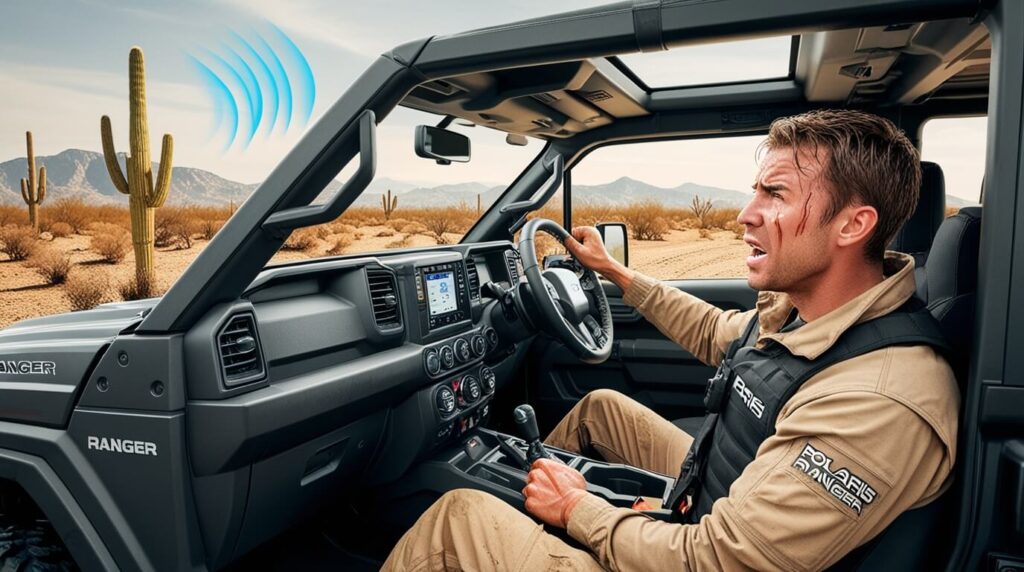
Here are the 3 major problems of Polaris Ranger with their solutions.
1. Starting Issues
Polaris Ranger owners often experience trouble starting, especially in cold weather. This can be due to a weak battery or faulty spark plugs.
Solution: Ensure your battery is fully charged, and if the problem persists, check the spark plugs for wear and tear. Regular maintenance can prevent this issue.
2. Transmission Slipping
Transmission slipping, especially under load, is a common complaint.
Solution: Adjust the clutch or replace worn-out drive belts. Regular belt inspections help avoid costly repairs and ensure smoother rides, particularly when towing or hauling heavy loads.
3. Steering Problems
Some users report difficulty steering, particularly when off-roading.
Solution: Check the power steering fluid and inspect the suspension components. Replacing worn tie rods and lubricating joints often restores steering to optimal condition.
Are Polaris Rangers reliable?
Yes, Polaris Rangers are known for their reliability, especially when properly maintained.
These vehicles are designed for heavy-duty use, from farming to trail riding. Users appreciate their rugged construction and versatility, but like any machine, reliability depends on usage and maintenance.
Regular oil changes, timely repairs, and using quality parts ensure longevity. Most owners report few issues, especially within the first few years of ownership.
Consistent care can lead to thousands of trouble-free miles, making the Polaris Ranger a trusted name for off-road work and recreation.
What is considered high mileage for a Polaris Ranger?
High mileage for a Polaris Ranger is generally considered around 7,000 to 10,000 miles. However, this number can vary depending on the vehicle’s maintenance history and usage conditions.
Rangers used for light tasks may last well beyond 10,000 miles, while those used in rugged, harsh environments might show signs of wear earlier.
Regular servicing, quality parts, and careful driving can help extend the lifespan, meaning some Rangers exceed 10,000 miles without major problems. Keeping up with preventive maintenance is key to achieving high mileage.
What is the Average life of a Polaris Ranger?
The average life of a Polaris Ranger typically ranges between 7,000 to 10,000 miles with proper maintenance, though some owners report their Rangers lasting up to 15,000 miles or more.
The life span is influenced by the terrain, load, and regular upkeep. For Rangers used in light work conditions, life expectancy may increase.
Components like the engine and suspension may require repair or replacement over time, but a well-maintained Ranger can provide reliable service for many years, making it a solid long-term investment.
Conclusion
In short, the 2013, 15, 16,18 and 2020 Polaris Rangers often come with their fair share of issues, including overheating, electrical problems, and faulty transmissions.
If you’re planning to invest in a Polaris Ranger, do your homework and avoid these problem years.
For a smooth and hassle-free experience, choose newer or well-maintained models. Ready to find the right Polaris Ranger for you? Start your search today!
FAQs
What is the life expectancy of a Polaris Ranger engine?
A Polaris Ranger engine typically lasts around 7,000-10,000 miles with regular maintenance. Lifespan can vary based on terrain, usage, and care, impacting engine durability
How many years will a Polaris Ranger last?
A well-maintained Polaris Ranger can last 10-15 years, depending on riding conditions and upkeep. Regular servicing and mindful usage greatly extend its lifespan and reliability.
What is the high mileage for a Polaris?
High mileage for a Polaris is generally considered around 8,000-10,000 miles. After this point, maintenance needs increase, and some components may require more frequent replacements.